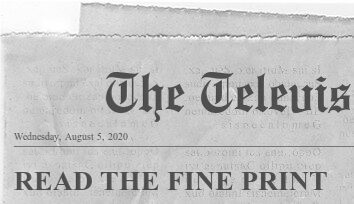Read the fine print
 A while back, I was watching one of my favorite police shows of the 60s, The F.B.I. (Call me nostalgic; I enjoy remembering the days when federal officers were the good guys.) Now, when I'm watching a DVD, I generally don't like to use the rewind button if I can help it; even though most of the shows don't include the original commercials, I still like to see them in some approximation of how they were originally broadcast.* But in this particular episode of The F.B.I, I saw something so intriguing that I had to pause and rewind, just to make sure I'd seen what I thought I saw.
A while back, I was watching one of my favorite police shows of the 60s, The F.B.I. (Call me nostalgic; I enjoy remembering the days when federal officers were the good guys.) Now, when I'm watching a DVD, I generally don't like to use the rewind button if I can help it; even though most of the shows don't include the original commercials, I still like to see them in some approximation of how they were originally broadcast.* But in this particular episode of The F.B.I, I saw something so intriguing that I had to pause and rewind, just to make sure I'd seen what I thought I saw.*That, and if I pause it for too long, I have trouble remembering what was happening when I start it up again.
The episode in question, "Hostage," was originally broadcast on February 19, 1967. As we join the story, the FBI has just put out a wanted poster on Dr. Marie-Luise Karn (Diana Hyland), part of a Communist team sent to kidnap an opposition leader in an attempt to force a prisoner exchange for a leading Red general. Fortunately for the FBI, a man working in the harbor (where the Reds plan to use a boat to facilitate their escape) sees the poster:

A few things become immediately apparent. First of all, the Eastern-bloc doctor is not six feet tall (earlier in the episode, we see a photo supposedly from the magazine Der Spiegel suggesting she's probably about 5'8", and Diana Hyland herself was 5'6"), is not an American (she's probably supposed to be East German), and therefore was not born in Stafford, Indiana. But you know who was born in Stafford?

That's right—Dr. Richard Kimble! Interestingly enough, he and Dr. Karn not only share the same birthplace, they were also born on the same date*, and are the same height and weight! And they both became doctors!
*David Janssen was also born on March 27, albeit in 1931. Coincidence?
Obviously what happened is that someone in the prop department pulled out one of the old Kimble posters, pasted Karn's picture over it, and used it in the episode. Both The Fugitive and The F.B.I. were Quinn Martin productions, so it makes sense. And in the days before high-def, big screen televisions with pause buttons on the DVD player, it's unlikely that anyone anticipated viewers would be able to even see the fine print, let alone notice the discrepancy.
It's all good fun, of course. One of the treats of watching old television shows on large-screen HD televisions is seeing things that were invisible when the show was originally aired; a Voyage to the Bottom of the Sea fan noted that the remastered discs now allowed him to see the wires that pulled models along the floor. As the Wizard said, pay no attention to the man behind the curtain. Little details like this just add to my enjoyment of the shows, and affection for the simplicity of the era. TV
Published on August 05, 2020 05:00
No comments have been added yet.
It's About TV!
Insightful commentary on how classic TV shows mirrored and influenced American society, tracing the impact of iconic series on national identity, cultural change, and the challenges we face today.
- Mitchell Hadley's profile
- 5 followers



